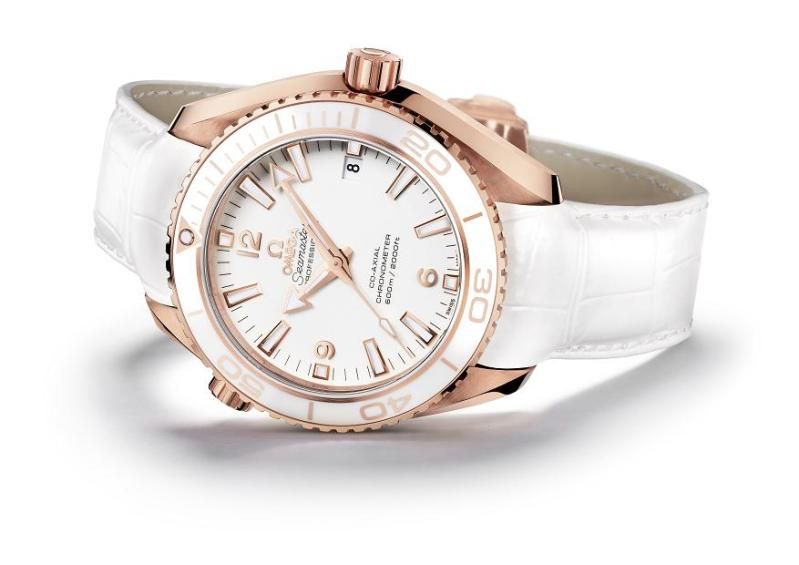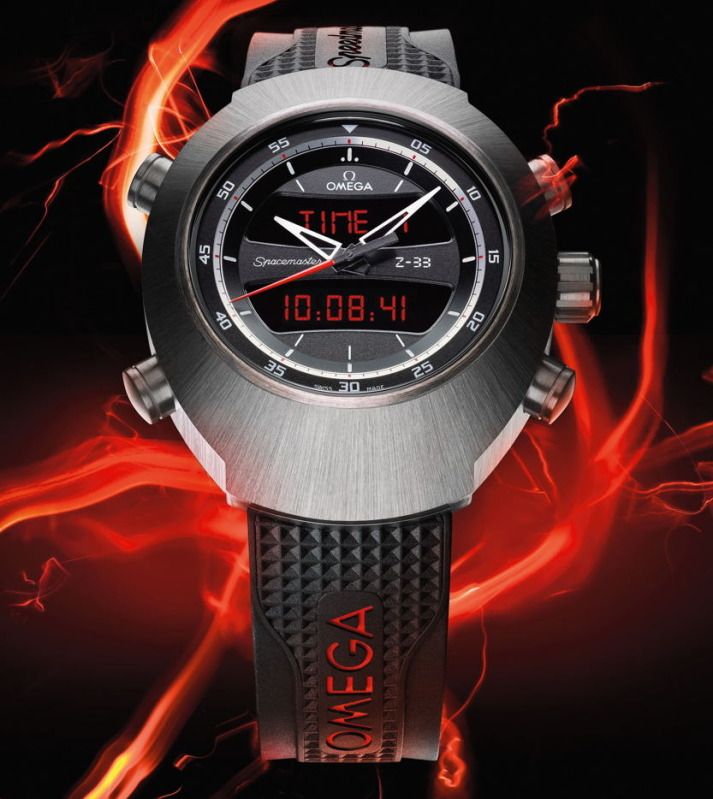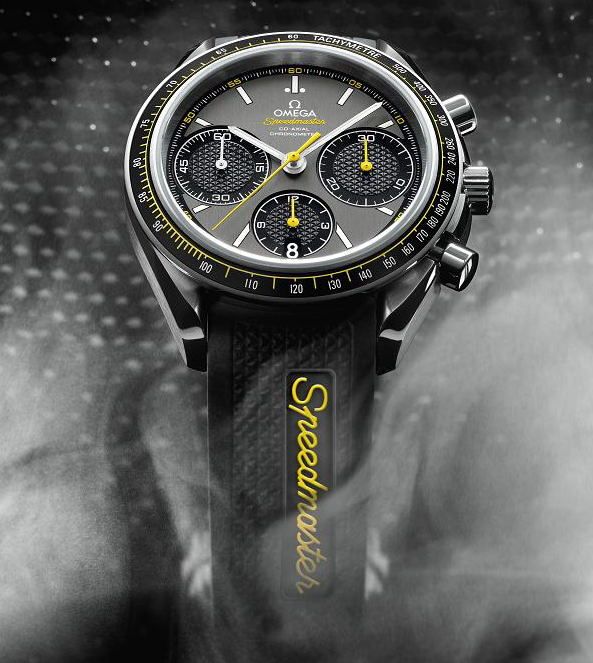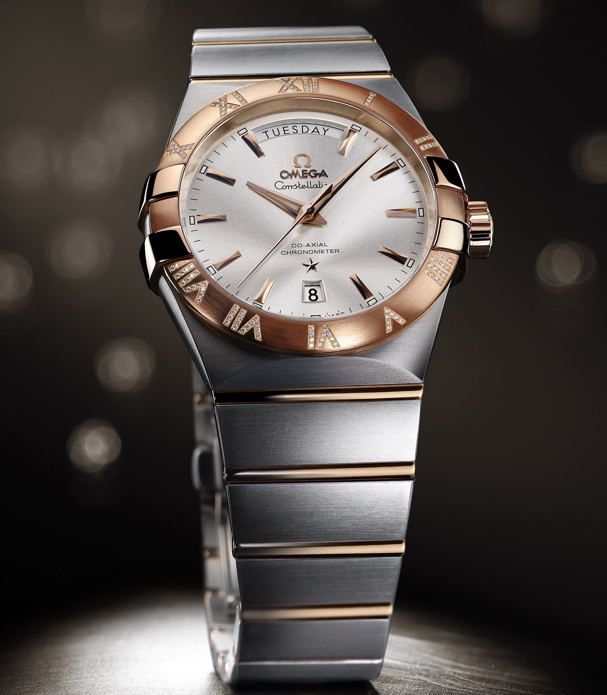The new Omega Planet Ocean 600M Skyfall is beginning to
trickle into Omega boutiques and dealerships to await the spin and brouhaha of
yet another Bond movie release. While Omega
may be excited over the seventh appearance of a Seamaster in a Bond movie, for
many of us, maybe, it’s just a bit ho hum?
Especially so when the Bond character has lost so much of its sauce and has
been subsumed into a world of also-ran action heroes. The question has to be asked, should Omega continue the Bond/Craig association
now that it has vastly improved the quality of its product since the inception of the relationship and enhanced both the status and
price of the brand?
In
1962, Sean Connery transformed Flemming’s flawed Bond character into a smooth-talking, fornicating, epicurean, car-loving, chain-smoking, benzedrine-swallowing, alcohol-abusing
sociopath who rogered and killed his way through a number of thrilling
adventures. This fusion of such highly desirable personal qualities and
character traits with a propensity for random violence struck a beautifully
resonate chord with young male and female audiences of the nineteen-sixties. It
was just what the doctor ordered: a counter-culture figure thumbing his nose at
the ultra conservative, ‘Thou Shalt Not’ moral
dictates of the older generations.
After Connery left the role, George Lazenby blundered his
way through Her Majesty's Secret Service and nearly killed the franchise off. Roger Moore and Pierce Brosnan oversaw the
complete ponce-ification of the Bond character, creating prissy, oleaginous
caricatures of our beloved cold war hero. From the perspective of retaining anything
originally ‘Bond-like’ in the character, the latest in the line of Bond actors,
Daniel Craig, is arguably the most miscast of all. Exuding about as much savoir vivre as a
British tourist on a budget airline flight to Rhodes, this foul-mouthed Liverpudlian
with the vulcanised muscles can be seen to have completed the transformation of
Bond into that of a video game action creature.
The James Bond ‘character’ is about as relevant today as a
Remington typewriter is to a teenager, and we need not look further than the mishmash
of animated violence and product placement that was Quantum of Solace to see
what the future holds for Bond. Bond now
conforms to the dialogue-starved American action hero genre, albeit with a few
extra toys. Notwithstanding some talent for acting, Craig is limited to aping
all the other Hollywood bone-heads who play action heroes in their customary
and roboticised fashion. While there is
talk about Bond iconography and legacy representing an important thread in
contemporary Bond productions, it is all but gone and indications are that
Skyfall will be no different.
Given, if played in the Connery
style, a twenty-first century Bond would have about as much credibility as a
Newt Gingrich moral sermon, but, surely, if so little depth is offered in the
characterisation of the contemporary Bond persona will there not be equally
little to latch on to by the multitudes of uncertain and impressionable young
adults seeking status and self confidence through the purchase of Bond-related
brands and consumables?
If the Bond character is just another characterless
Hollywood action figure, the only
solution is to morph the character into
the fabricated public ‘identity’ of the actor playing the character. Thus, like
all the other non-comicbook action heroes, Daniel Craig becomes the character
(James Bond) and James Bond becomes Daniel Craig; a transmogrification achieved
with so little apparent effort from everybody concerned, if Quantum of Solace
is the standard by which we judge these things!
Following the above line of reasoning to its logical
conclusion, Bond and the whole 007 roadshow becomes simply a vehicle for a
morphed Daniel Craig persona. But, where
does this place Omega in terms of its product placement deal with the makers of
Bond movies? Omega’s marketing
Department would argue that if Craig is Bond and Bond is Craig and Craig is an
Omega Ambassador then it doesn’t matter, as long as this composite ‘property’
stays in line and doesn’t compromise the brand. Recent events, however, may
have had the Omega marketeers thumbing nervously through the celebrity rags
praying they don’t encounter another Daniel Craig faux pas.
As famous for never showing his teeth in a publicity shot
(this hides his imperfect bite and makes him appear strong and intense) as he
is for playing the Bond role, Craig has recently shown a propensity to pepper
his public conversations with that decidedly non-Bond word “f**k”, or
derivatives of it. Commander Bond as we know would
have a ready supply of euphemisms to use in place of the ‘F’ word - like
‘butter the muffin’, ‘go on bush patrol’, ‘jump some bones’, ‘park the Aston in
the garage’, ‘deploy the wedding gear’, ‘open the clam’, or, over brandy, the
slightly obscure ‘engage one’s brains for a change’ or ‘storm the trenches’,
but ‘f**k’..........never!! It just
ain’t 007, but it IS Daniel Craig.
In interviews, Craig appears unconcerned with plucking the
‘f**k’ word out from his limited public vocabulary when stuck for adjectives.
Recently, he took a swipe at the Kardashians, calling them f***ing
idiots”. Irrespective of the fact that
truth in this case could be considered a defence of such comments, one could expect the Omega
ambassador to perhaps tone down the language a tad. Earlier in the same
interview that touched on his embarrassing Jonathon Ross interview, Craig
lamented, "I wish I did have f***ing jazz hands, but I don't”. In a December interview last year, Craig
lashed out at politicians, calling them “sh*theads” and, in a show of political
acumen that would shame any Fox Televison
commentator, offered the profound insight, “That’s how they become politicians,
even the good ones. We’re actors, we’re artists, we’re very nice to each other.
They’ll turn around and stab you in the f**king back.” Ah yes, that’s right, artists and showbiz
types are models of rectitude, are devoted servants of the public weal and
should rule the world!!!
In an interview promoting the Girl with the Dragon Tatoo,
Craig, reflecting on his entry into the Bond Franchise, explained, “The
deciding factor for doing “Casino Royale”, even though I was umming and
aahhing, going [puts on moody voice] “I don’t know if I want to do it”, was
that they showed me the script and I thought: F**k, I’ve got to do this.” Such
powerful use of the English language by a model British thespian, and a compelling
argument for him to have properly finished his secondary school education
before he ran away to be famous.
So, let’s answer the original question about the Omega Craig/Bond
association. Perhaps we could answer it
with a few more questions? For example, does Omega really want to associate its
rising Super-Veblen brand status with a foul-mouthed tool head? With the price points now achieved on a range
of its models, is the Bond fan base a market that Omega wishes to dominate? Given Omega’s recent history of superb brand
husbandry, boutique expansion and product relationship coups, hasn’t the Bond/Craig tie-up run its course? Is the
relationship at the point where it will debase or contradict the elevated
status of the brand? Hmmm.......that would have to be nope, probably not, yep, and yep.
© http://omega-constellation-collectors.blogspot.com













